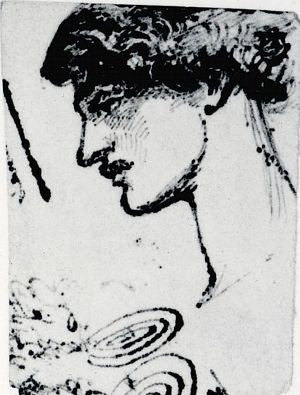How much this bird in my hand is worth.

A bird in the hand is a full-bodied heartbeat. So much a thrumming that you might not know whether you or the bird is more startled that you've just gotten your first lesson in how to hold a captive cardinal. She will not be captive for much longer; you have carried her out into the flurries to photograph and then release her. It's not until later--not until you scroll through the pictures, start showing them to others--that your eye will meet hers and start you wondering: how much the terror of having the whole body enclosed? how much the disdain for the grounded big body? how much the dull blank of inability to comprehend the quiet ssh sshing the inexperienced make to soothe? Your left and right hands will learn what they did together: the left a cradle and a keeper, the right a shooter and a seizer. Looking back over the pictures, you will remember that this bird was in hand for a long time before the moment of this image: the capture, the measuring, the bagging and weighing, the impromptu hand-off when more birds arrived in the nets. You will be glad to remember that this one took wing mere seconds after your shutter flew back.


A bird in the hand will bite, if he can. And little wonder. But what amazes you, as you hover behind the student researcher who invited you to come along and photograph, is the gentle swiftness of her touch, her dexterity and unflappable calm. The way she does everything she can to ease the trauma of capture and carrying. The way she does not complain when the bird beaks her again and again, even though her work began before dawn, even though you follow her everywhere with your cameras. The way she embodies, without effort, the best of the people who surround you: she has chosen good work, and she is doing it well, and she is happy to share, though sharing will not disrupt the intensity of her focus.
When you look at these pictures later, you will realize how much her hands resemble your own. You will have this confirmed when your own mother thinks that the hand in the pictures she has seen was your hand. "You have the same fingernails," she will say. You will already have experienced some difficulty, remembering who was holding which bird. Only the second student's hands will be immediately discernible as hers.

A bird that is not the right bird will stay in the hand only as long as it takes to unnet her.

Unusual suspects will, having blundered in to the net's pockets, remain stiller than still, awaiting release.

This bird in the hand will be the one who fully reveals to you that birds, like the rest of us, have different characters, different distinguishers. A darker brow. A taller crest. A bigger head. A slightly less quiet manner. By the time you hold this one, you will have become eager to take on more birds if necessary. You will have offered to carry this one outside for release, while your student measures and weighs and samples blood from more birds indoors. (You will, even as you type these words, continue to marvel at the straightforwardness of her work. You will start to think about how one might capture poems, watch them forage on the ground and then fall up and into a fine net. Or words. Perhaps biting words. Perhaps a dictionary is a net that stays.)

A bird in the hand will remind you that some things that seem like affection in fact just cause pain. When you watch this biggest of the ladies (as you too are coming to call them) biting your student again and again, as your student tries vainly to coax her to flap her wings for the camera, you will know what each bite feels like. Later, you will not be able to remember which bird it was who bit your middle finger. You will not even be able to remember whether it was a male or a female, though you will start to think that it must have been a male, and that you volunteered for that particular holding, too.

What you will remember best is your student's patience with this bird, who seems to know what the camera is there for--or perhaps to respond to her own reflection in its lens. What you will take home with you is a bite mark, a brag, all these handed birds.


1 Comments:
That last picture is phenomenal. I'm probably anthropomorphizing, but that cardinal really does look like she's glaring at the camera -- as if the fact that you're photographing her when her tufts are in disarray really is just the last straw.
Post a Comment
<< Home